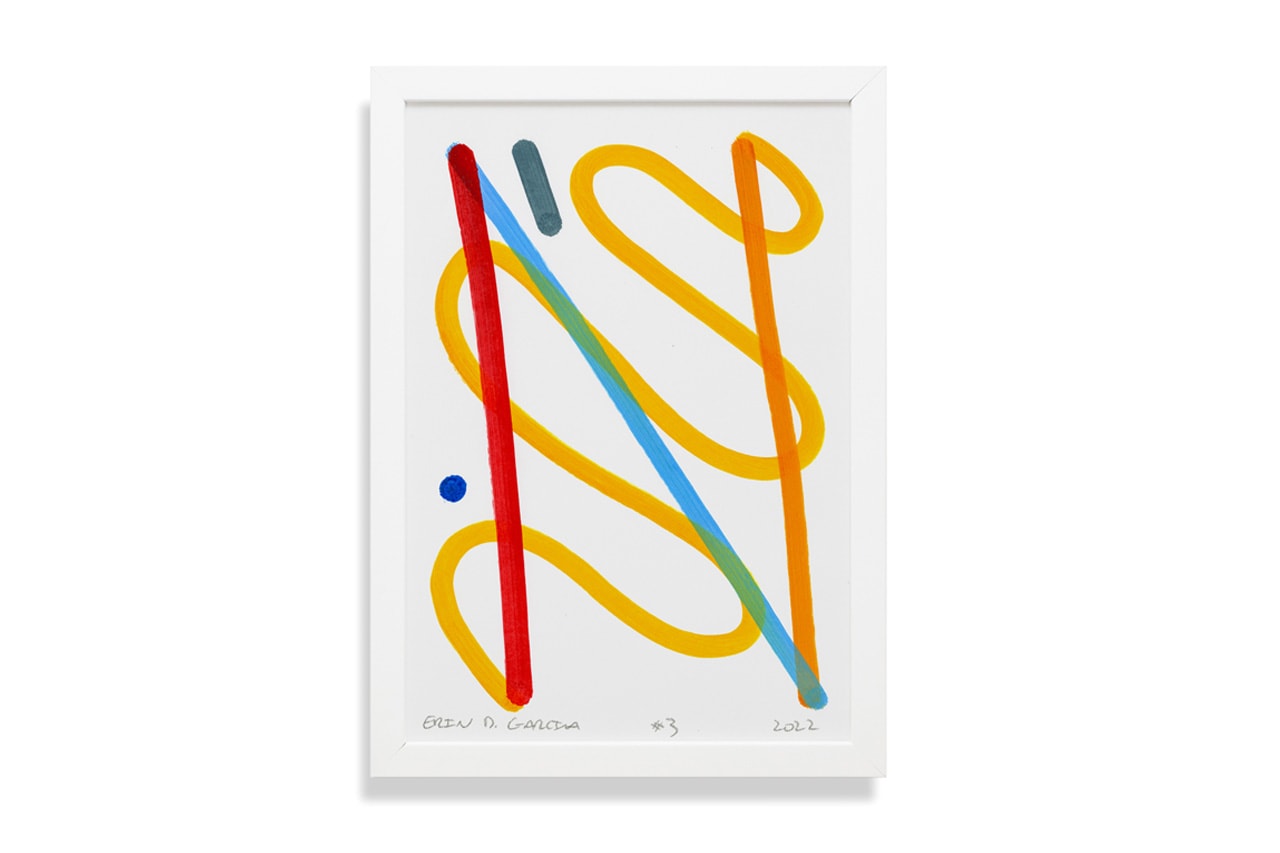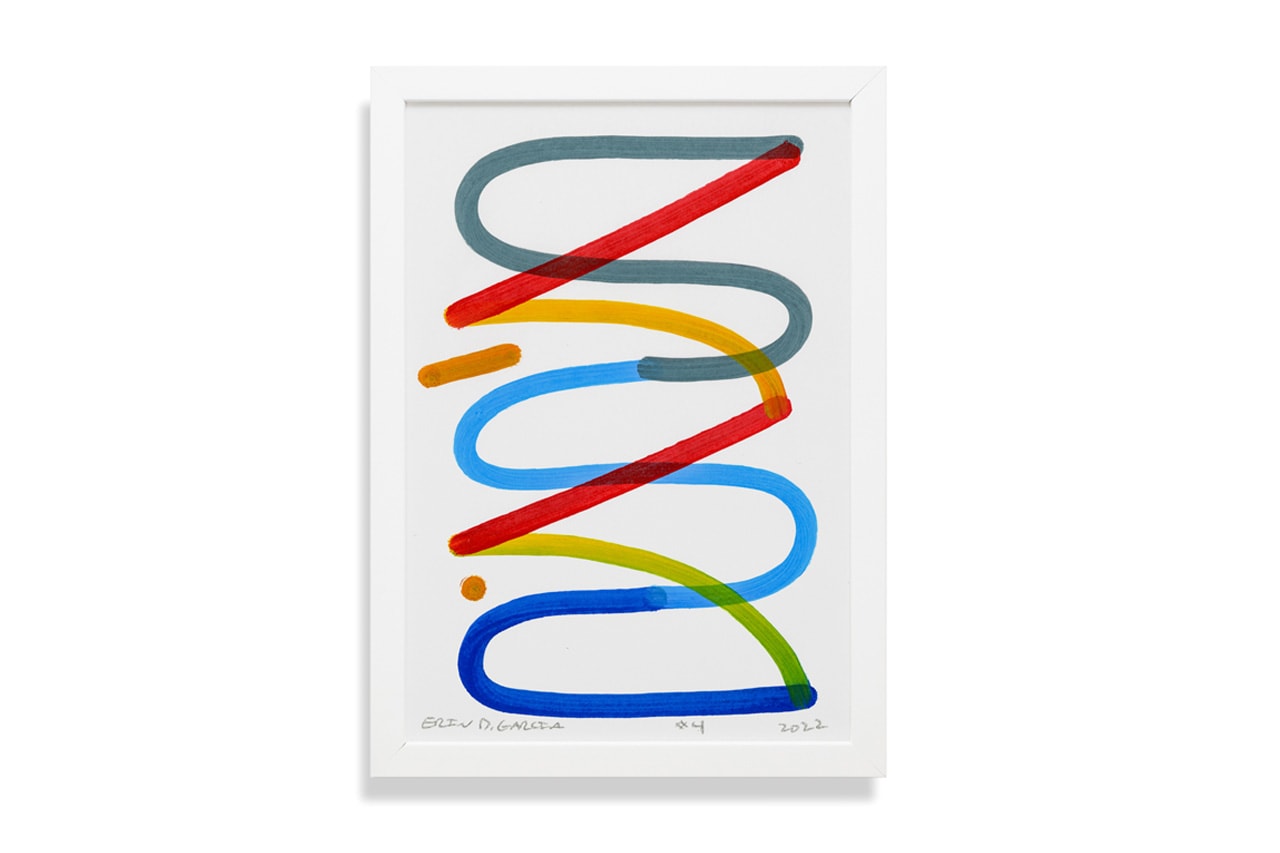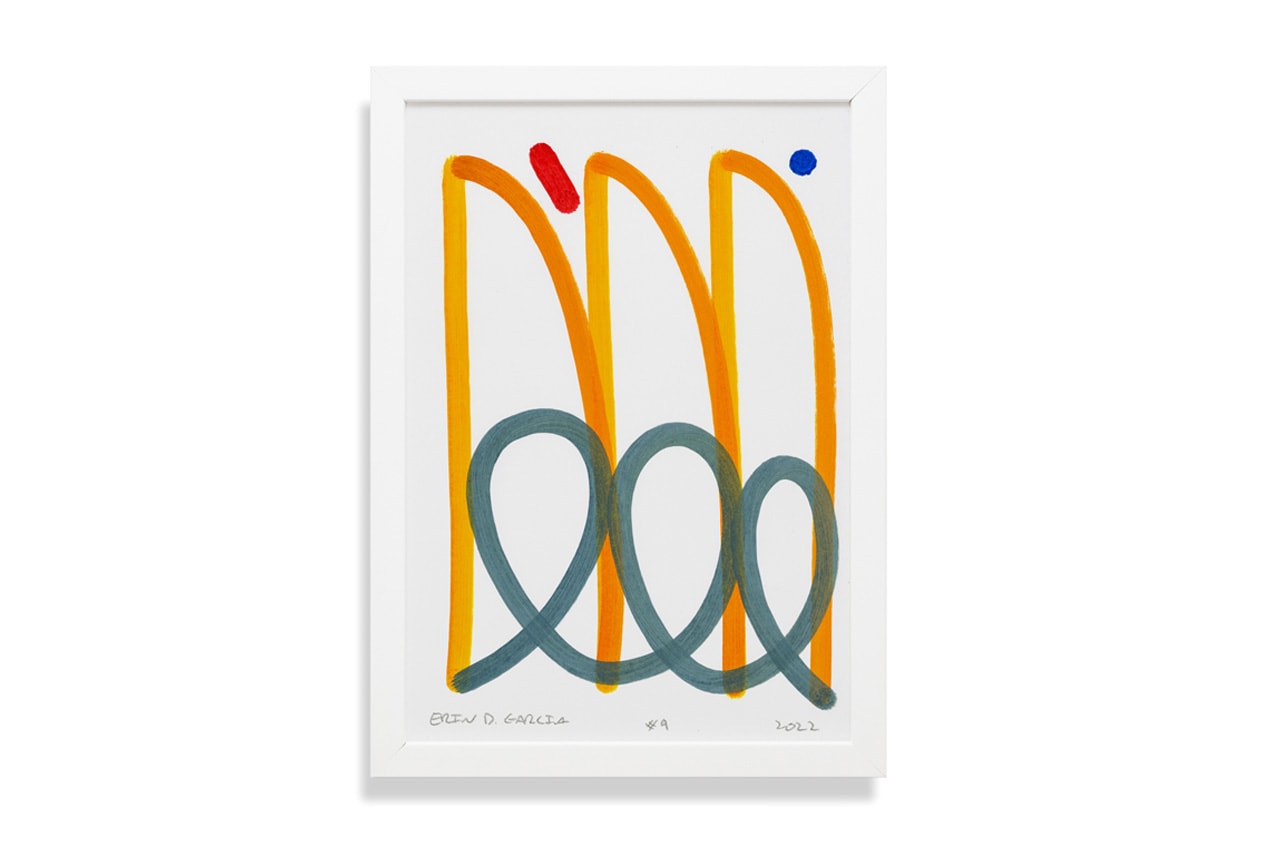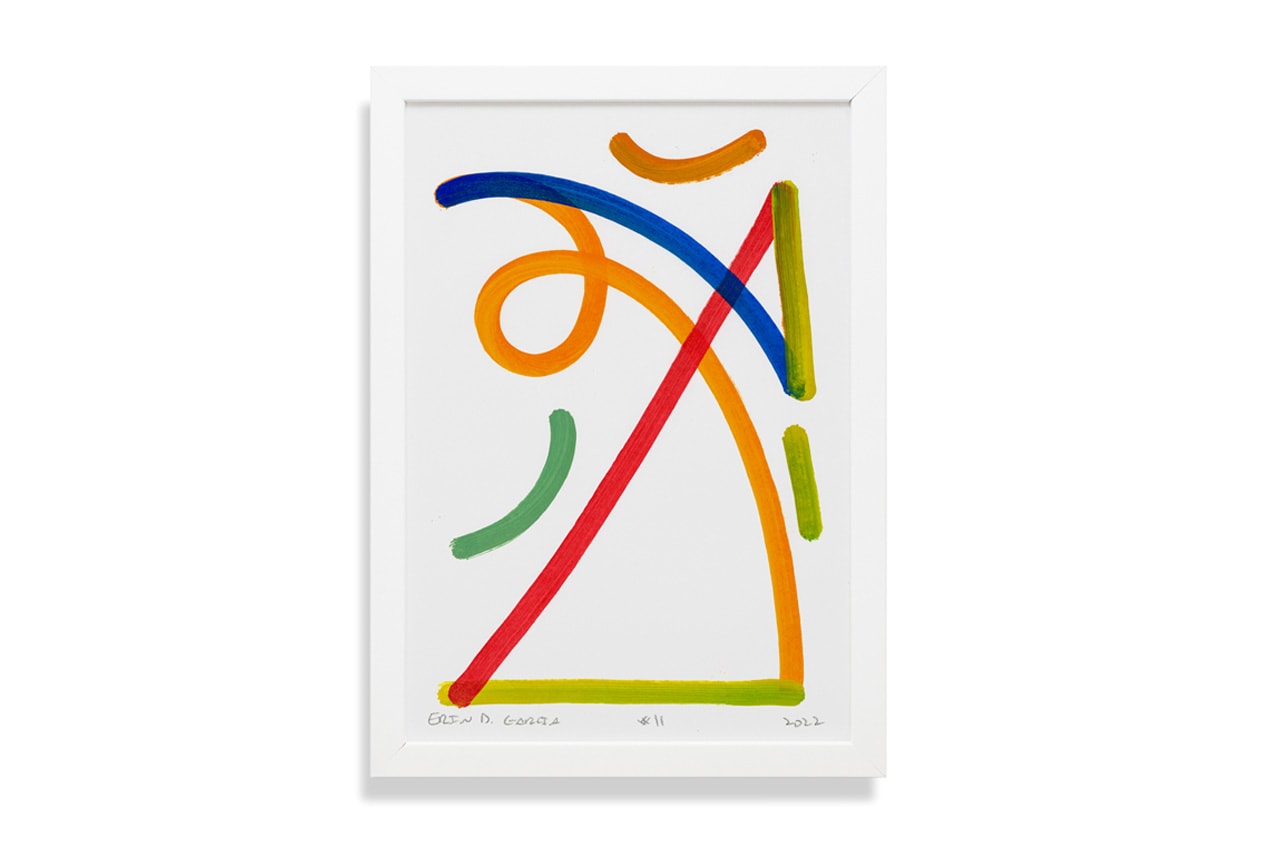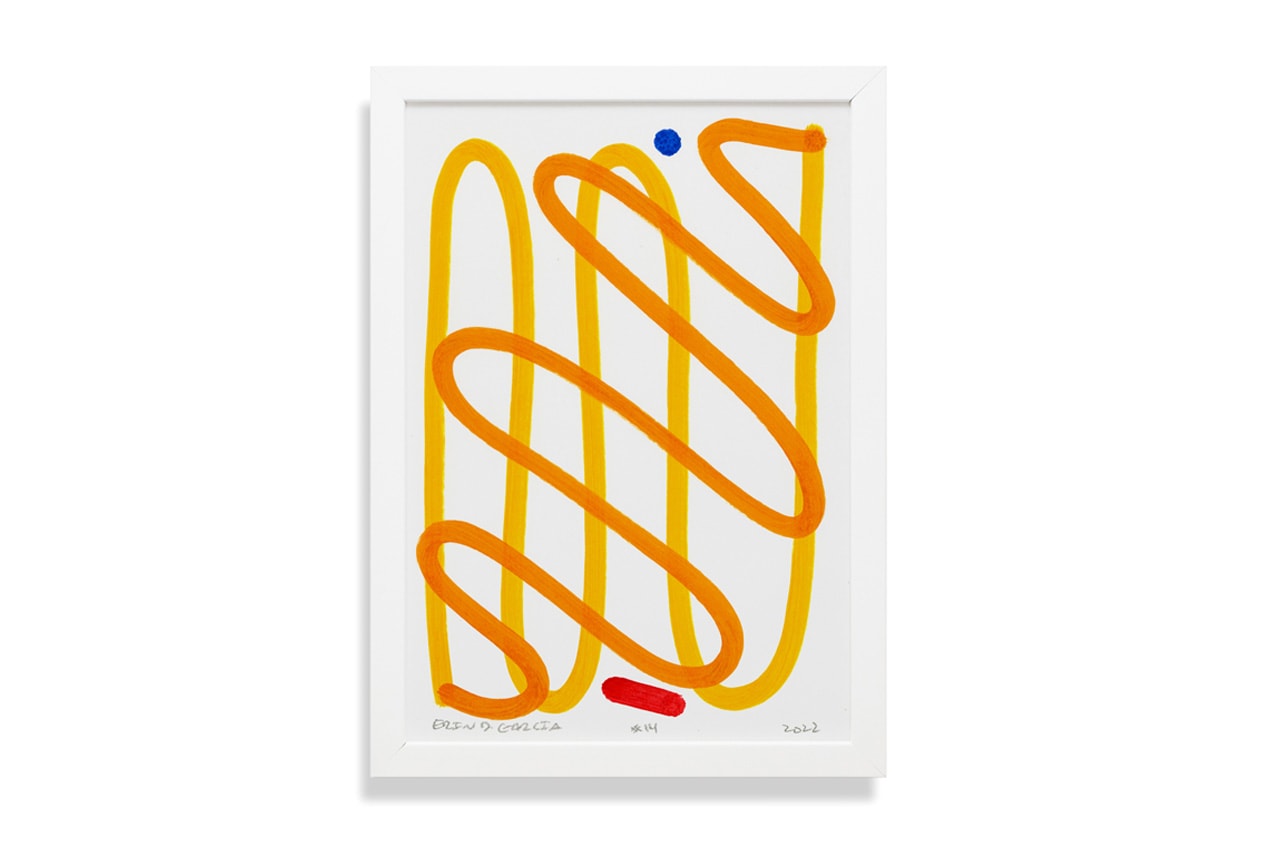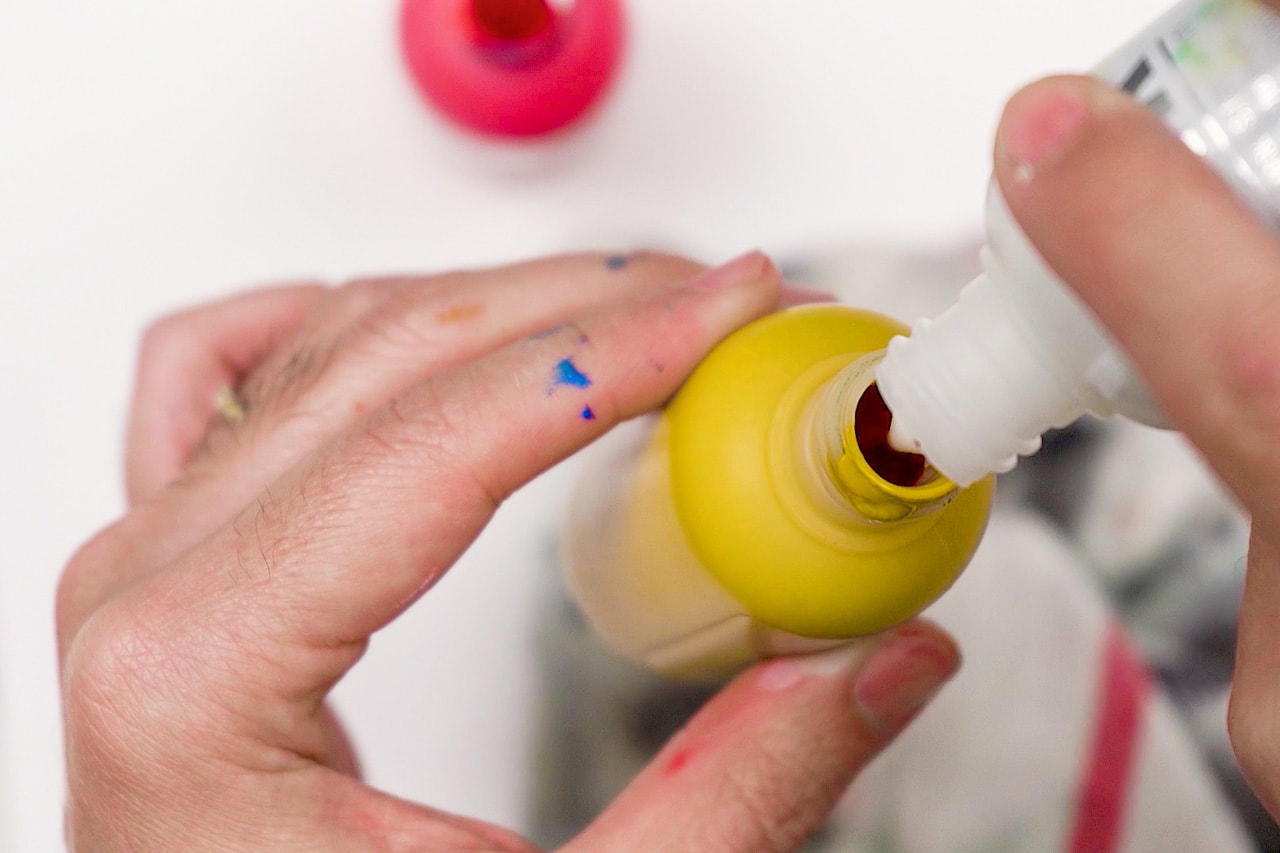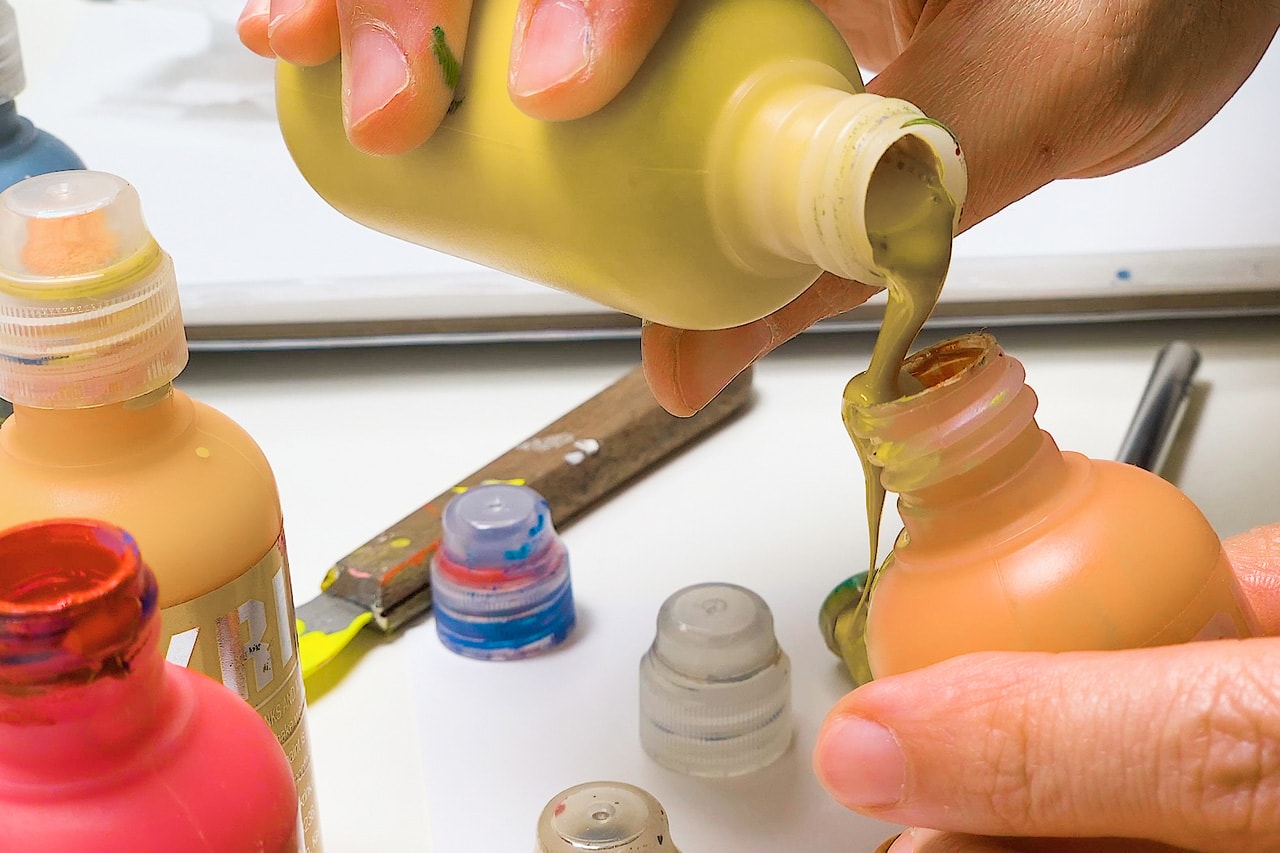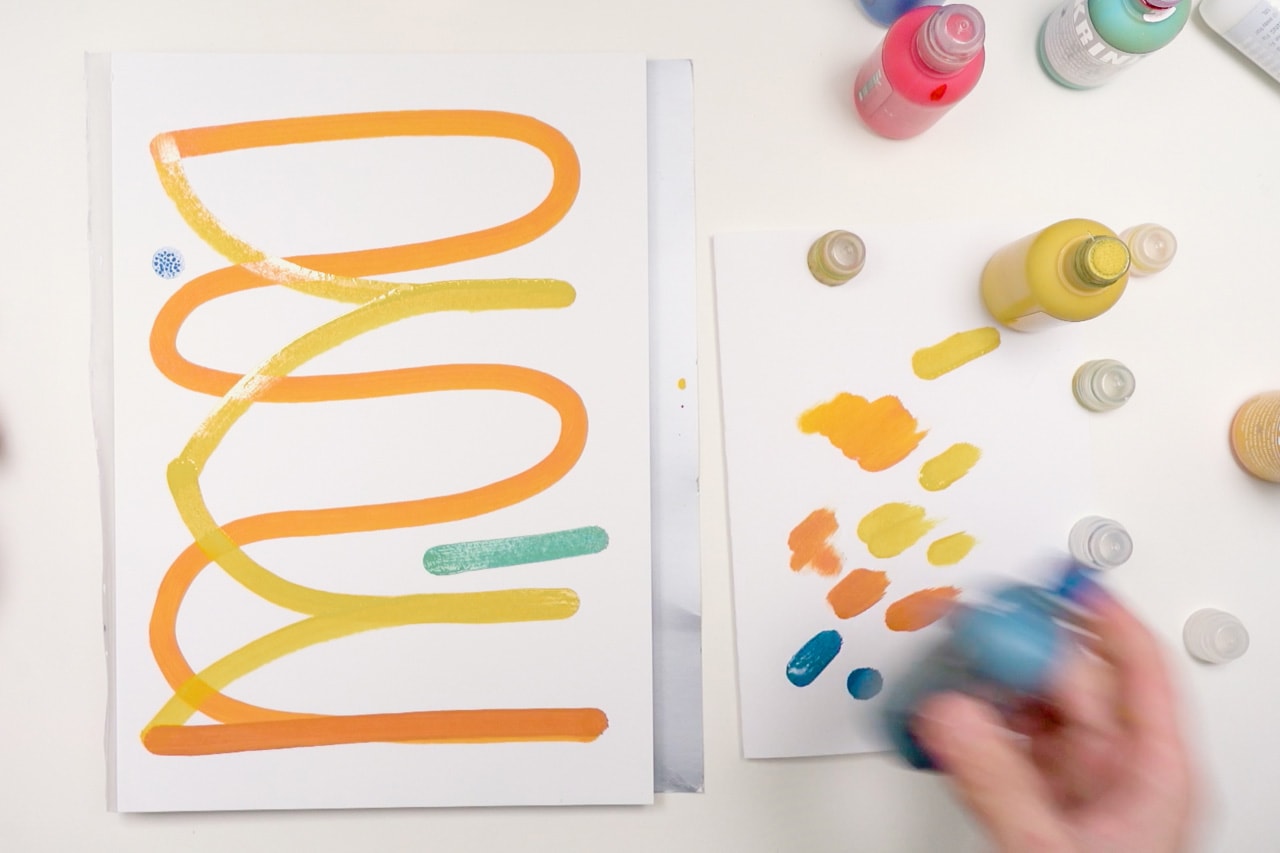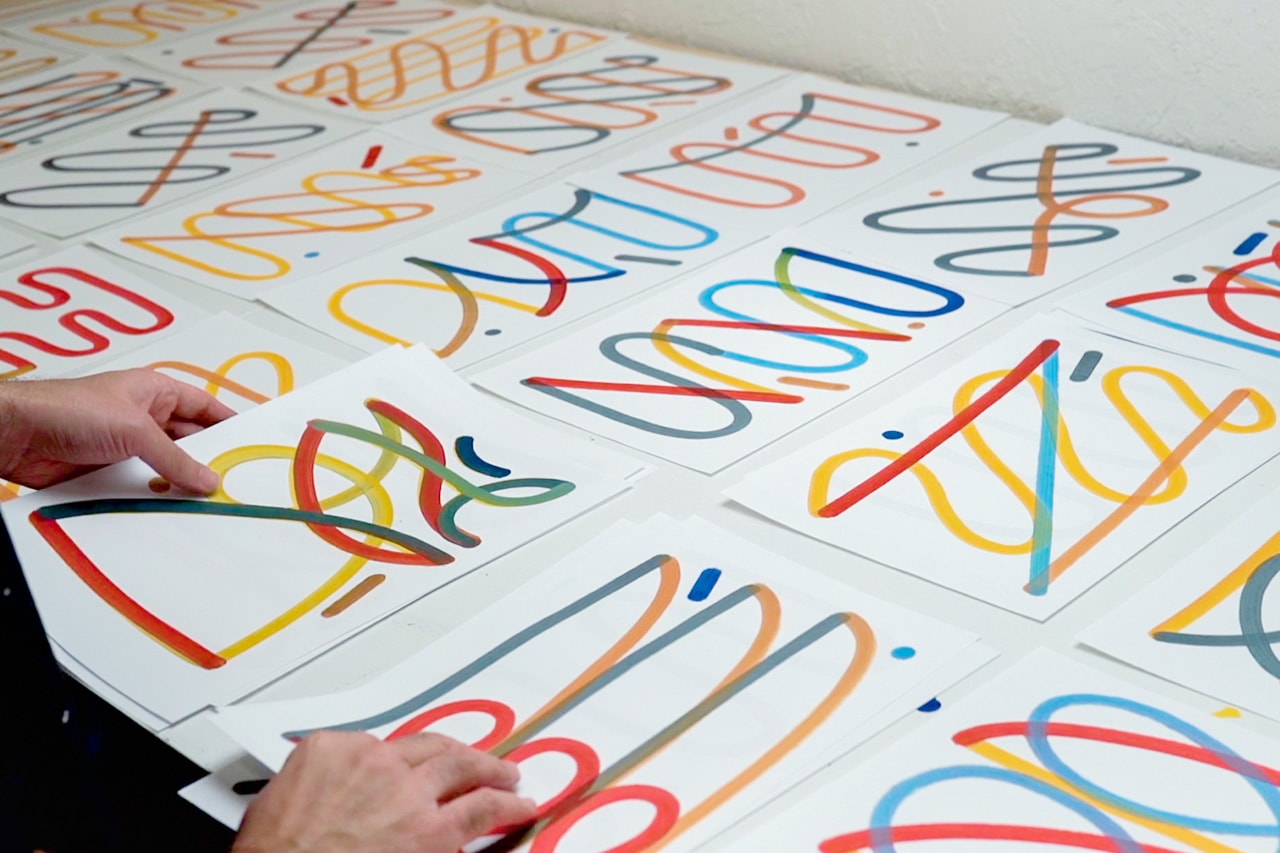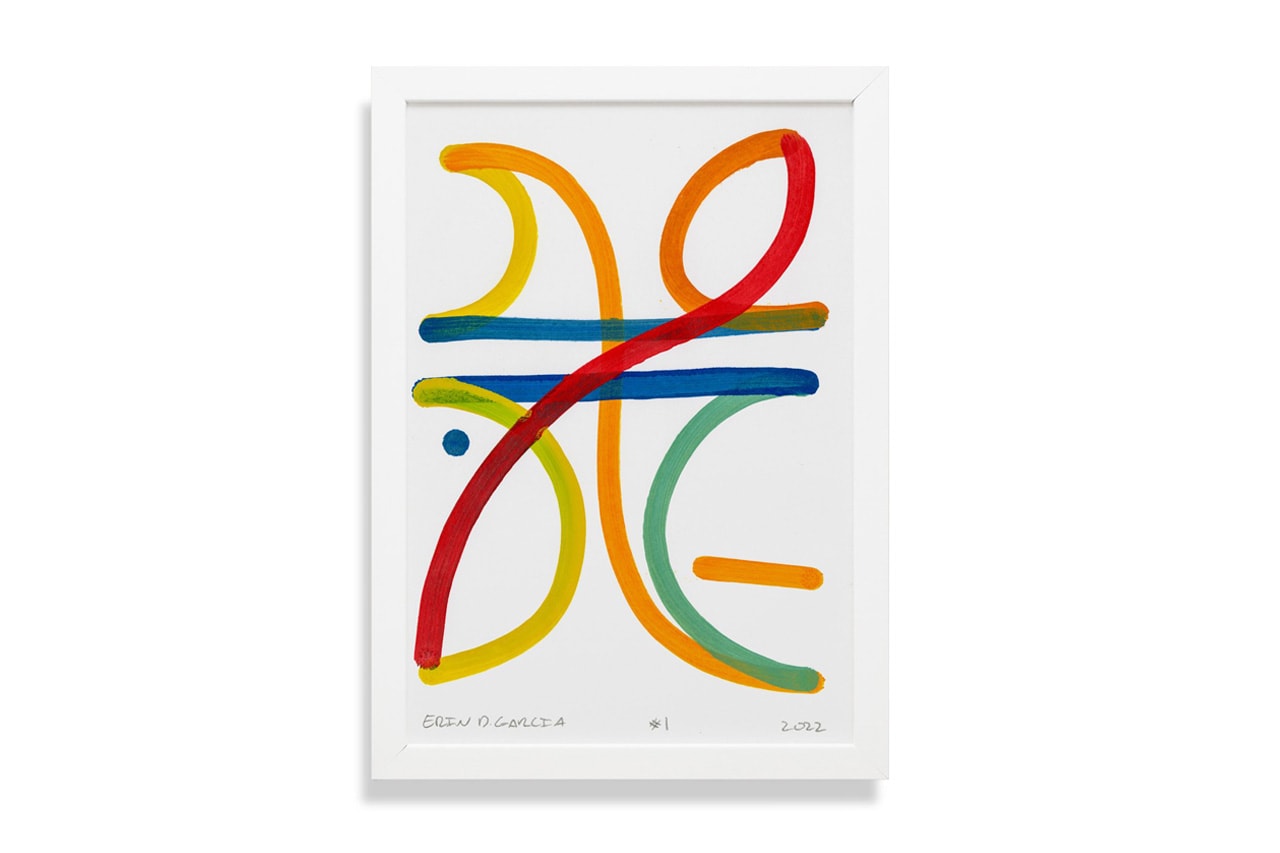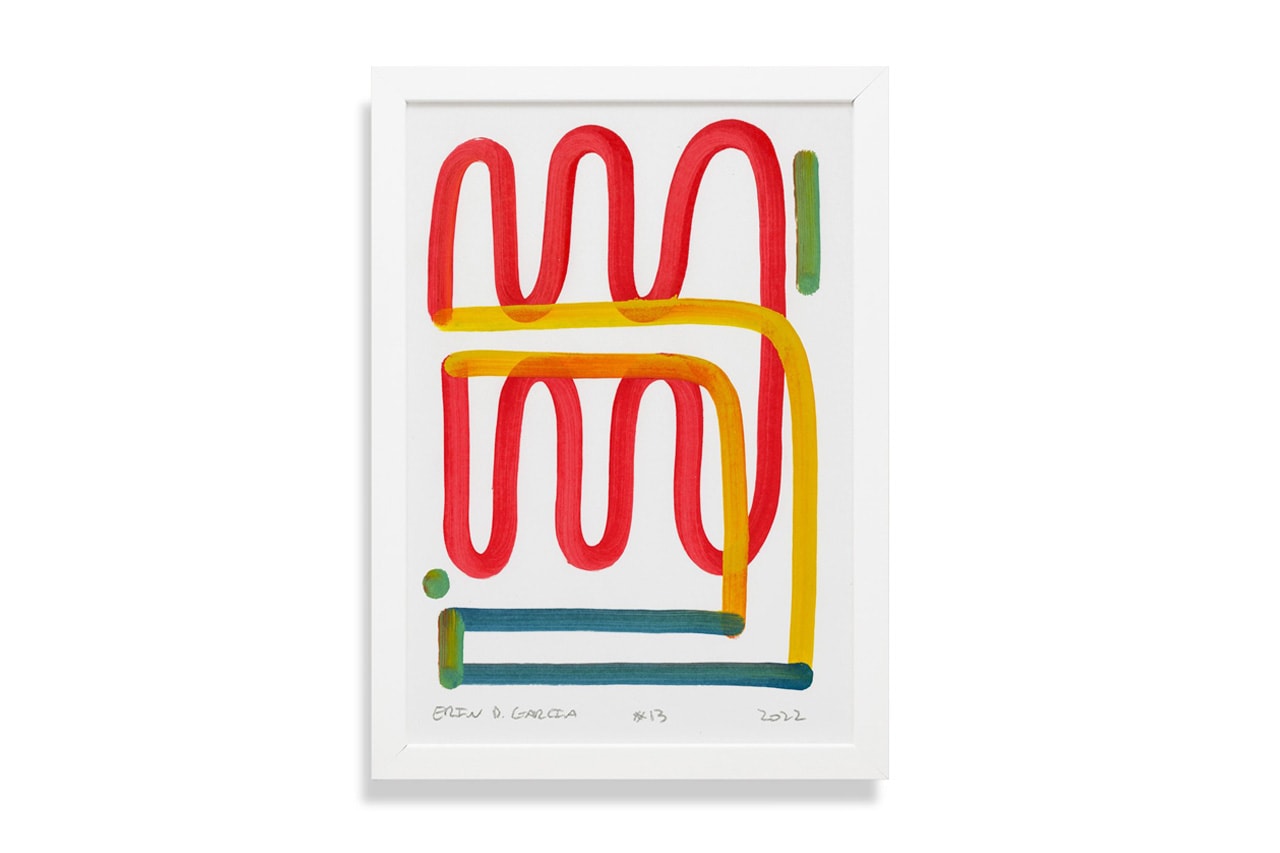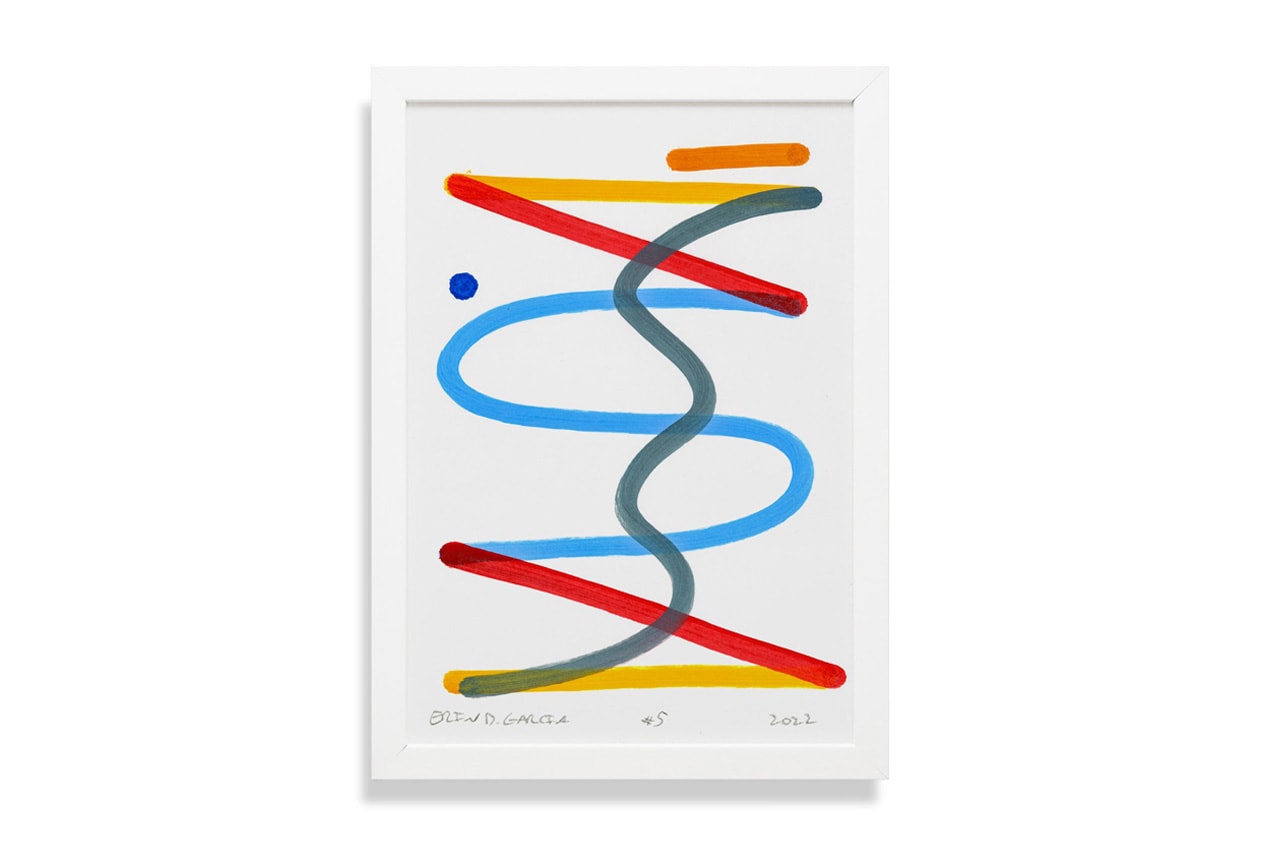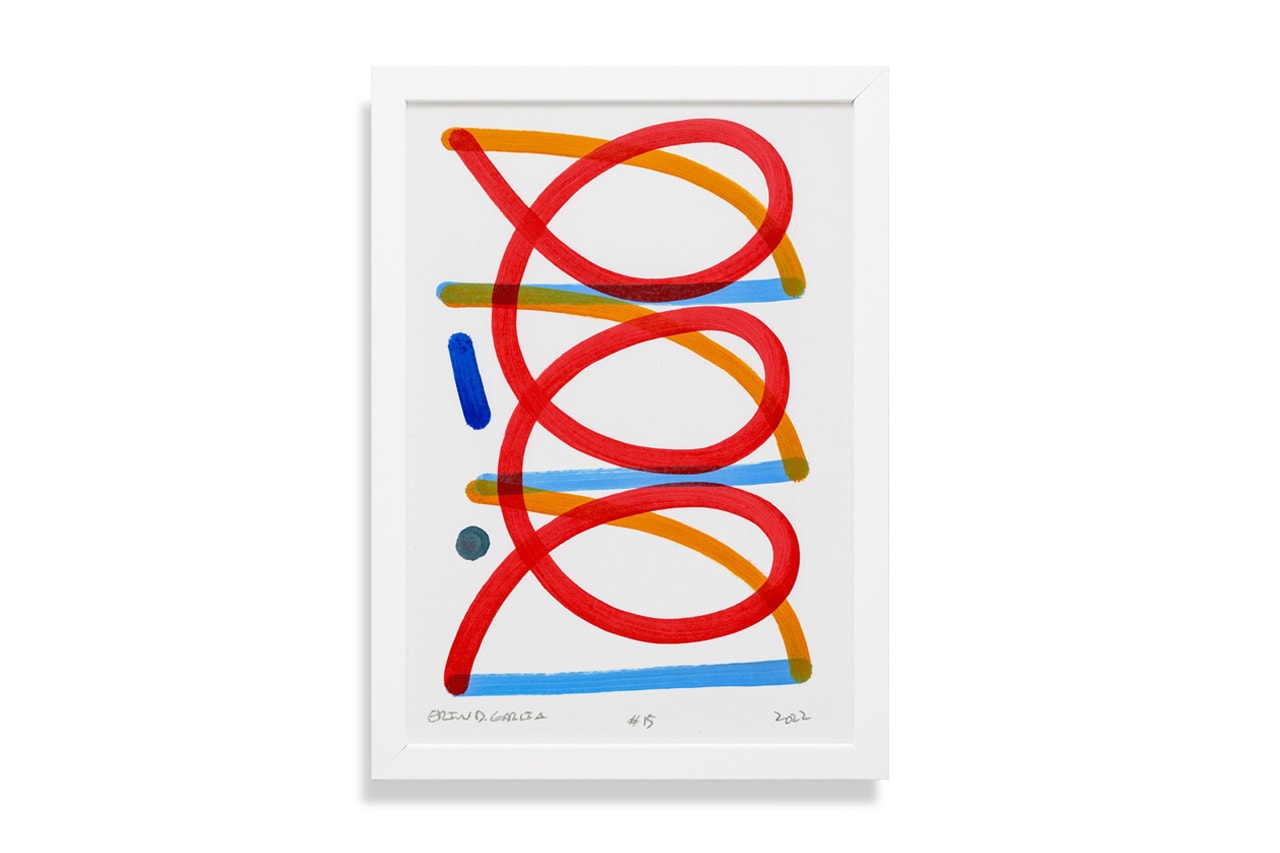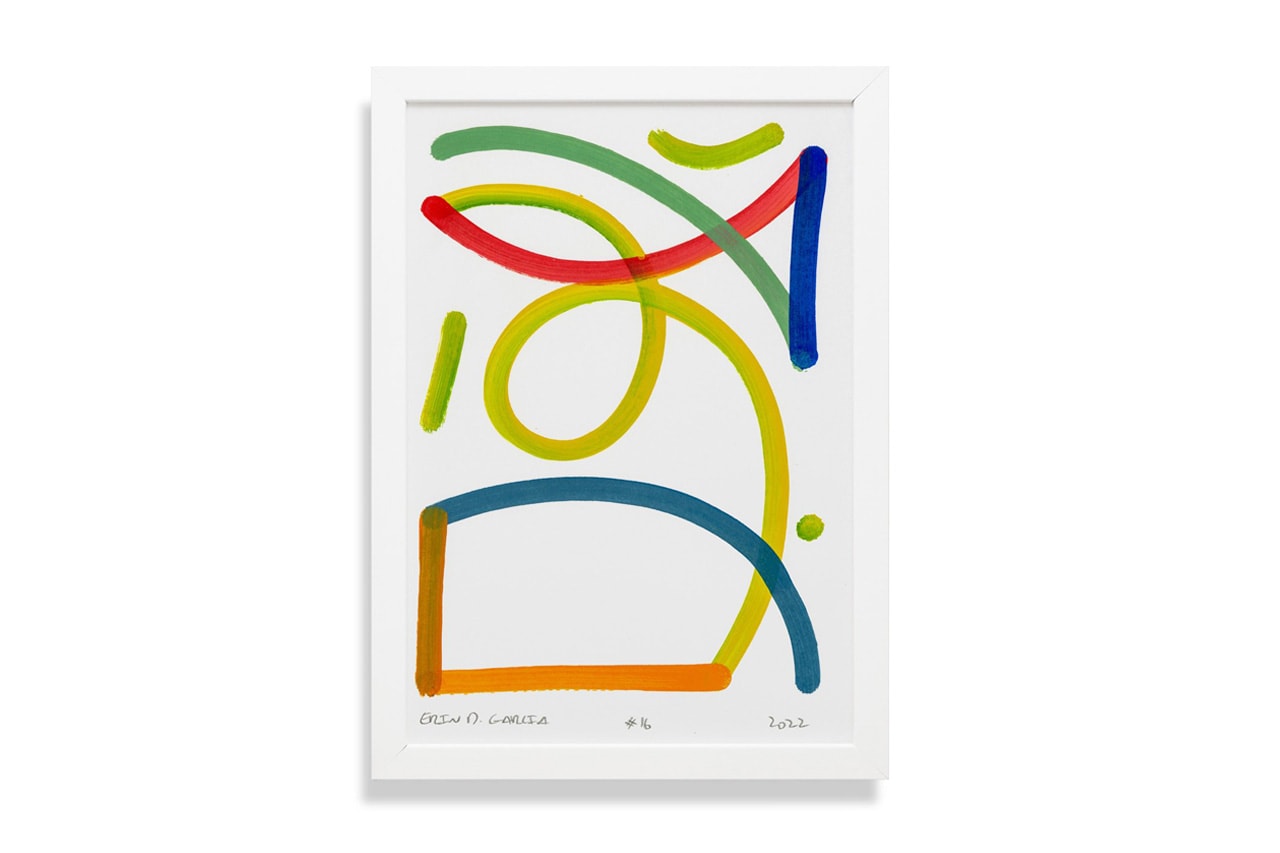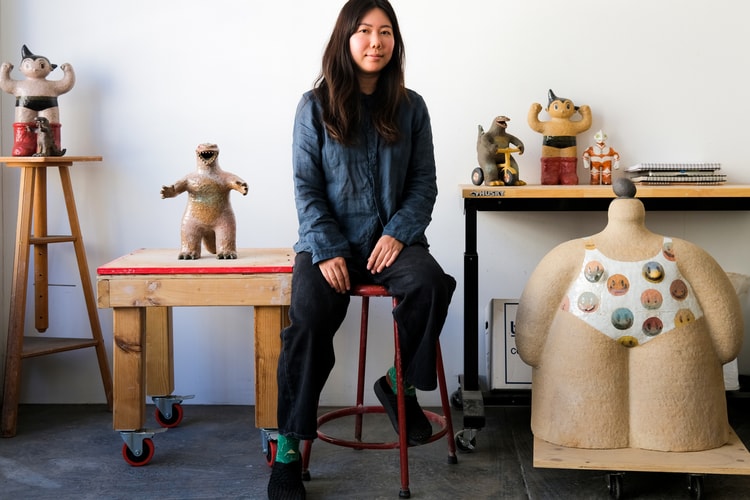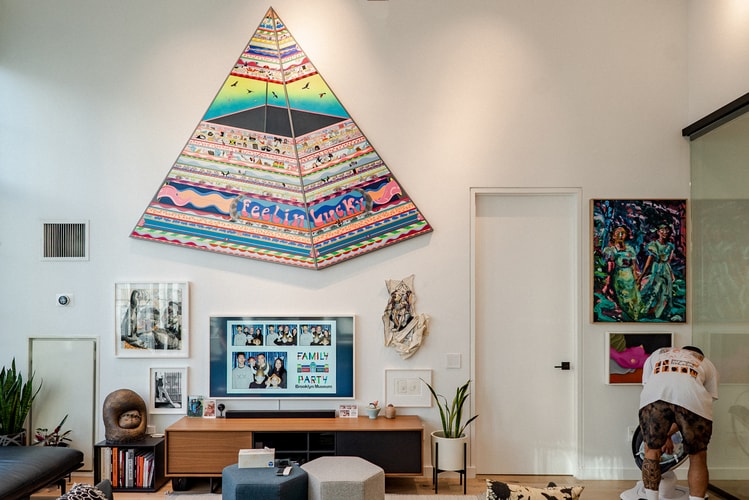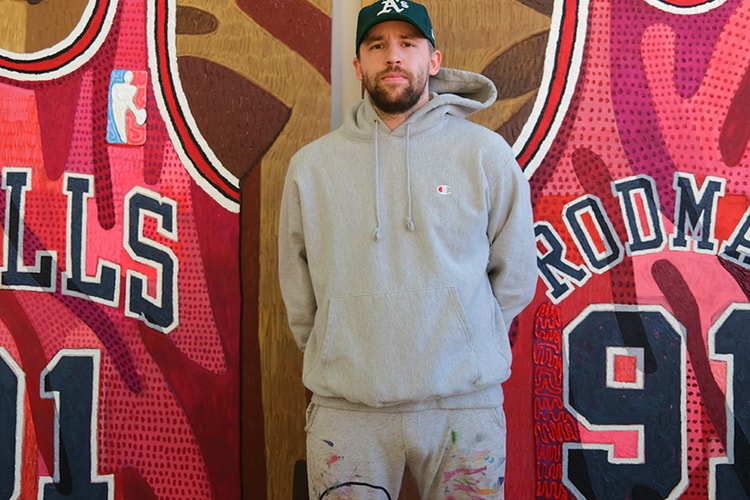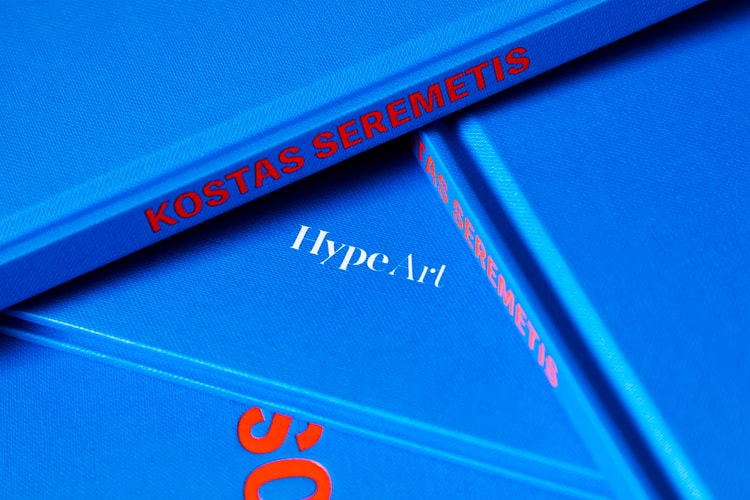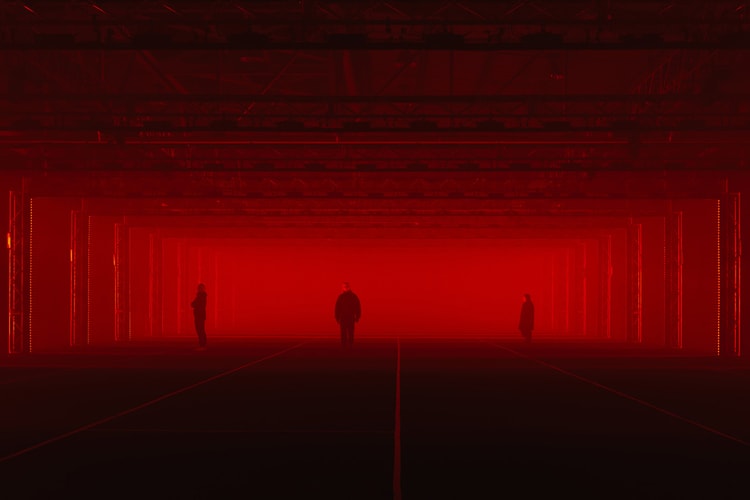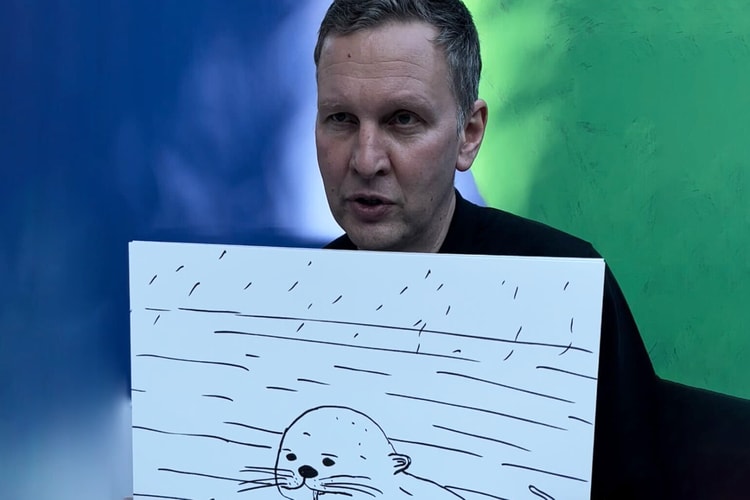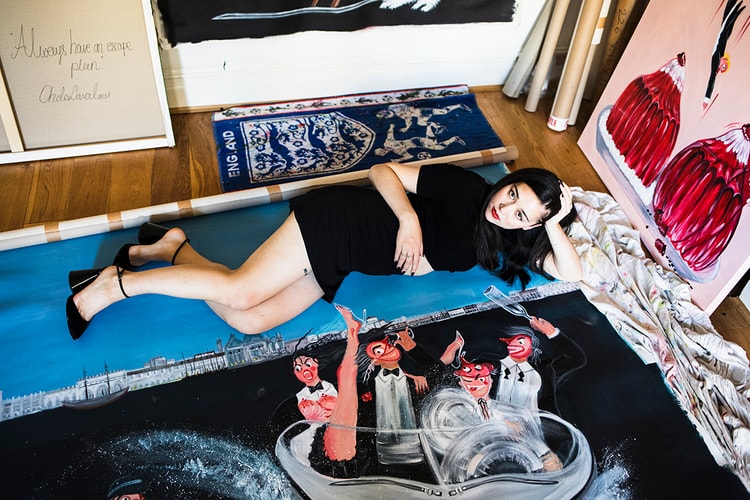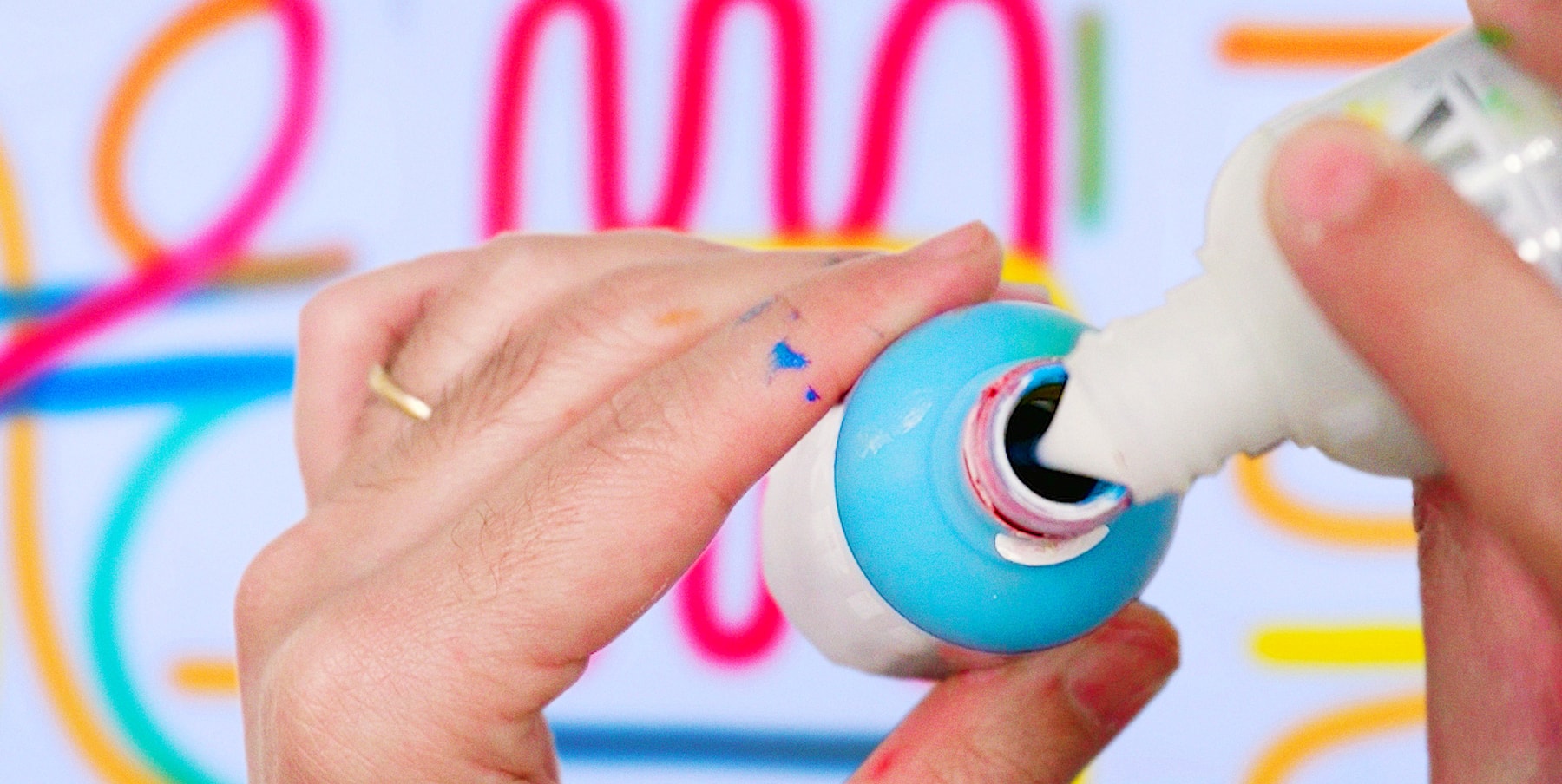

No matter if you’re an artist or a carpenter, according to Erin D. Garcia, “your brain breaks down ideas in the same type of way…It’s all a creative path.”
Born and raised between Alabama and North Carolina, Garcia naturally gravitated to the community that shared his interests, namely music. Observing his work and you can begin to detect a rhythm — an abstract mark that harks back to his days playing drums in several punk bands, to producing beats for various musicians, shorts and commercials.
Meanwhile, Garcia always knew that he’d want to transition into the visual arts after observing a catalog on acclaimed conceptual artist, Sol Lewitt. “It was probably the first time I had looked at that type of art and it opened up a whole world to me,” he told HYPEBEAST.
Entirely self-taught, the LA-transplant began to learn the ins-and-outs of art-making by simply doing it — from basic sketches to wall murals for various hotels and buildings around the world. Instead of highly-stylized depictions, Garcia chooses to simplify his ideas to its constituent elements — line, shape and color.
Perhaps most unique to his aesthetic is a series of elemental studies that he creates by blending KRINK K-60 markers into lyrical compositions that always embark on a familiar path, but result in a language that is entirely his own.
For our latest Pen & Paper feature, we caught up with Garcia to explore his practice and chat about the latest series, “New Waves.” Read the full interview below.
“What really grabbed hold was graffiti.”
Can you talk on your upbringing and how you were first exposed to art?
A lot of my family is in Alabama but we moved to North Carolina in middle school. I grew up in a medium sized town, Winston-Salem, but I was kind of a weird kid and trying to find like-minded people. Back then everything’s always based around music. So when you find the same people who are into the same music as you, you end up being friends and that’s the entry point when you’re that young.
So it started with metal and punk then rap. I played in different punk bands and we had a club that we’d book bands to come play shows and stuff. As far as art and when it started to grab hold, I was always drawing a bunch and my family really supported me in terms of supplies.
Was it something you thougt of as a career path?
I don’t think I understood being an artist as a real thing, but what really grabbed hold was graffiti. We were all super into graffiti, but none of us did graffiti. When we’d go to New York, we’d buy magazines and followed artists from Europe like Delta, who was big at the time. KR, ESPO, KAWS — it was that era when all those dudes were coming up.
I was following those dudes since high school and it’s really cool to have a generation of artists that you were following from early stages of their career and seeing how they’ve developed where they are now. You look back at these other generations of artists — the ‘80s, you think about Keith Haring and Basquiat. Even before that, you think about the people coming up in the ‘60s and before that the people coming up through Modernism, etc.
You get a generation and that’s the generation that you belong to. And by understanding their starting point and how they’ve developed over time as an outside viewer was super formative.
Did you attend art school?
No, totally self taught. I did a year of community college and dropped out, then moved to Colorado.
How about your foray into music?
I DJ’d and did production for a bunch of years. I was in a group called Brother Reed, we toured a bunch and had a few records. I was also playing drums in a few other bands, but it was always a side thing. Before I was doing art full-time, I was making music for shorts and commercials.
“It transports your mind to different places.”
How did you develop this mark-making or language that you’re known for?
When I really got more into drawing, I was doing more of an illustrative style — animals, creatures, robots, whatever. It was again just on the side and for fun. I had a show a long time ago in LA at a hair salon with Cali DeWitt and a photo team called Day 19. I just got too tired of drawing that style because it was too detailed and I just got kind of bored.
I found this book and it was a catalog for the Guggenheim for their Minimalism collection. It was probably the first time I had looked at that type of art and it opened up a whole world to me. ‘I can see this and the beauty and simplicity in it and it transports your mind to different places.’
The images aren’t abstractions of anything, they’re the things themselves. From there, the one that really hit me was Sol Lewitt. After I got that book, I just started drawing lot of connected lines that would turn into more recognizable structures and 3D shapes. That was the beginning.
I had a couple of friends in Highland Park who owned a space called THIS Gallery and they’d do these group shows every year and there would be like 100 artists. You’d submit a piece or two and I’d always sell my piece. By having those shows every year, it gave me something to plan towards as far as stuff that I was working on.
Eventually around 2012-13, they’d ask me to do my own solo show, where I really began to develop this idea I was working on to a place where I could make an entire show worth of it.
From those original 3D drawings, they’d grow into more structured forms and I’d pull those forms apart into their individual parts — which were straight and curved lines. That became the foundation of everything —that small palette of shapes and forms are repeated over and over again until you to this place where I’m doing these gradient paintings. But everything I do is all the same forms reconfigured to various degrees.
“Elemental pieces of everything.”
What would you call this series of symbols?
I call them elements, because that’s really what they are. Elemental pieces of everything.
There always seems to be something recognizable within these pieces, where it’s something that your brain has seen before but is always entirely new. Can you talk more on how you transitioned into the gradient paintings?
The gradients first started with KRINK pieces. With the KRINK stuff, I hadn’t really used acrylic and I didn’t understand texture or any of that, but I understood those markers really well because I’ve been using them since my first show and how the ink worked. So I started mixing colors together and getting different streaks and combinations by using those markers.
I got commissioned to do a surfboard, which was the first thing they asked on a studio visit, where they said, ‘Hey can you do this, but on something else?’ I just figured it out and it was the first thing I did acrylic gradients on. From there, each commission I’d get, I had to figure out how to do the actual process to make it.
Are you working on a new body of work at the moment?
Not really. I have a show later this year but haven’t started it. I did just do a new KRINK series though. They have a new marker set and they sent it to me to play around with it. I made a video of using it and mixing them, but then that actually turned into a stack of drawings, so I decided to make those into the next series.
“From full-spectrum light to sound, water and vibrations.”
When you approach a new piece, is there a theme or idea in mind or do you go with the flow?
With the KRINK pieces, I hadn’t done one for a while, so anytime you go back to an old idea, you fall into the last idea you had with them. When you have that much space between it, your mind goes to many different places and it’s within that search that new ideas form. Sometimes I’ll come at stuff with an overall theme, but most of the time, I’ll just sit and work.
You come across a good idea and then try to repeat it a couple times. Then you move on from there and by the end of the night, I’ll have maybe like 20-50 drawings laying around of ideas and you can come back the next day liking maybe ten of them. That’s how I normally build bodies of work and I’ll look at it and then explore the ideas in each and what are things that I’m interested in right now as far as giving it an overall title.
For the KRINK work, I drew all the stuff first then came up with the title, “New Waves,” then started reading about waves and all the different types of waves — from full-spectrum light to sound, water and vibrations. By giving it that title, it pulled the whole series together into a solid idea.
Looking at the scope of your practice, would you say there’s a through line in terms of the messages explored?
The ones that I like are the ones that I put out into the world. One of the through lines that I see, which is evident in the work, is that they have a lot of energy. I like movement, bright colors and how they push against one another. I like the textures and overlapping, but there’s nothing I’m really trying to explain to the viewer.
Everything that I’m interested in is in a way what I’m trying to show to people. Something that’s new for me is titling stuff that gives a piece a new type of resonance. I love this idea of giving the viewer a picture, emotion or point of context with the title where you can then see the work in a different way.
I did these bowls recently and I went off the shape of those as far as what the title of them was. For example, Fantasma means ‘ghost’ in Spanish, but it’s also a shared word in Tagalog. Little things like that helps me make work more interesting than just ‘untitled.’
“Your brain works in the same way regardless of what medium it is.”
Art has such a steep learning curve, where some can feel discourage from pushing it full-time. For an artist that is entirely self-taught, what made you fully go for it and what is your advice for people who are now in the same position as you once were?
I had two strong years. One was getting my solo show in 2012 that led to a little exhibition in San Francisco with RVCA, which led to my first big mural at the Ace in Palm Springs. I was also in a book of Californian artist in the span of two years and that was really the big push.
As far as advice, I wrote this somewhere, but obviously the first is what everyone says — you just gotta’ fuckin’ work. You have to draw a lot, you have to get the ideas out and do what you can to be able to develop yourself to the point where you can execute a project or commission when someone asks for it.
Get your thing together — whether it’s drawing, painting, sculpture or whatever — and develop it to a certain level and find like-minded people. You’ve got to find what you’re willing to work on for 12 hours a day without it annoying you.
Do you see parallels between your early beat-making and your art today?
It’s all a creative path. Your brain works in the same way regardless of what medium it is. You learn how to get inspiration from something and develop an idea and the many steps involved — from sketching to the final product. Even for non-purely creative fields, like if you’re a carpenter, your brain breaks down ideas in the same type of way.
Is your exhibition at the end of the year going to be in LA?
It’s going to be in Tokyo at DIESEL ART GALLERY in August.



